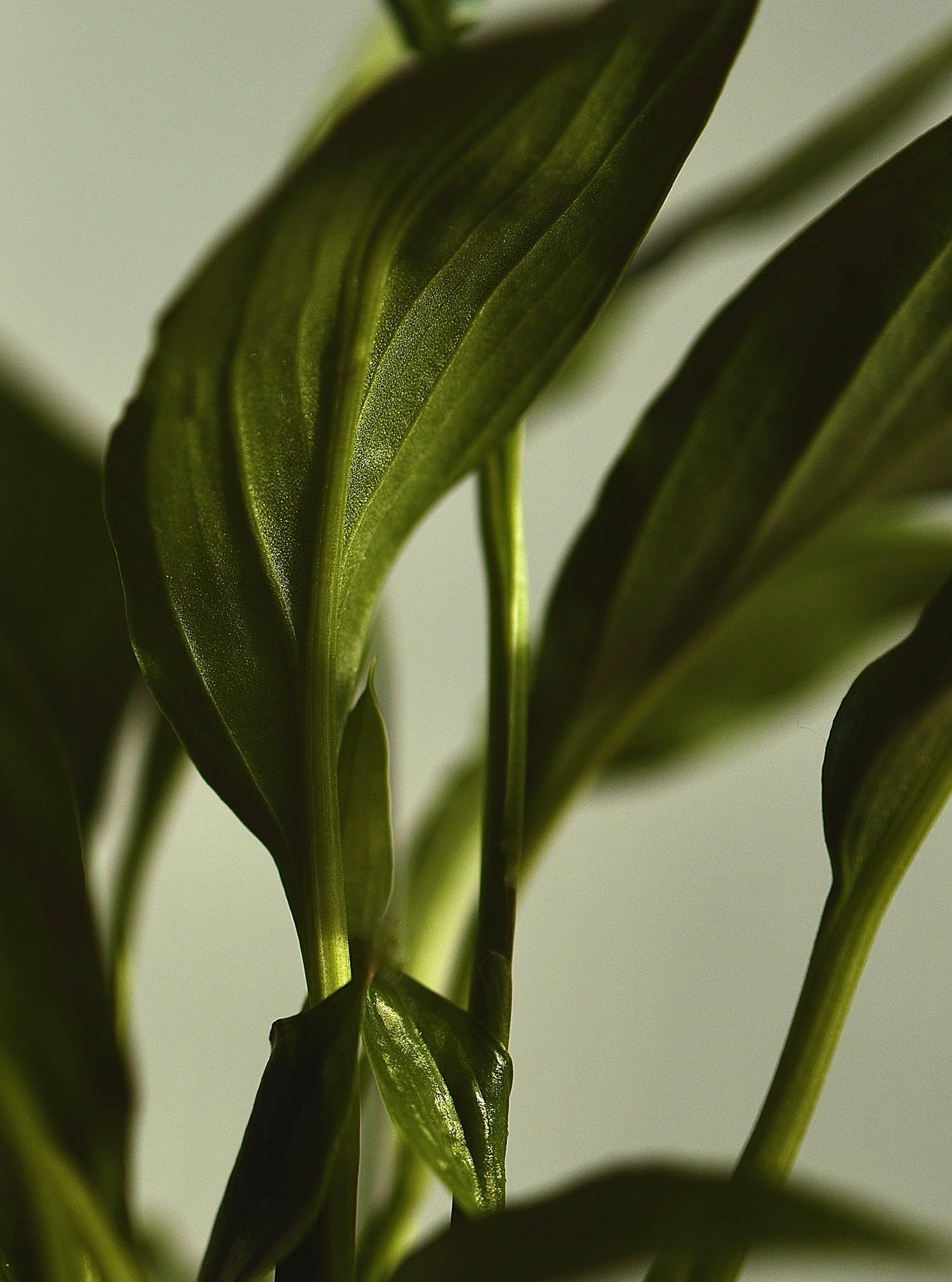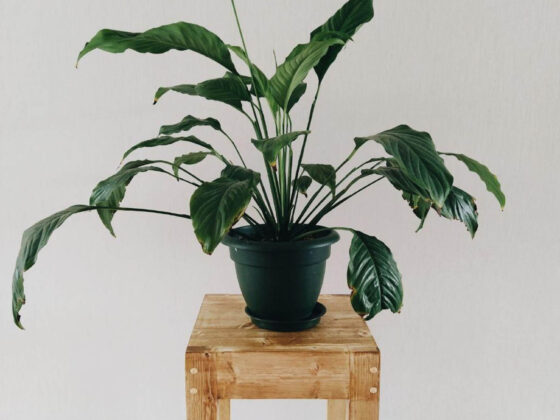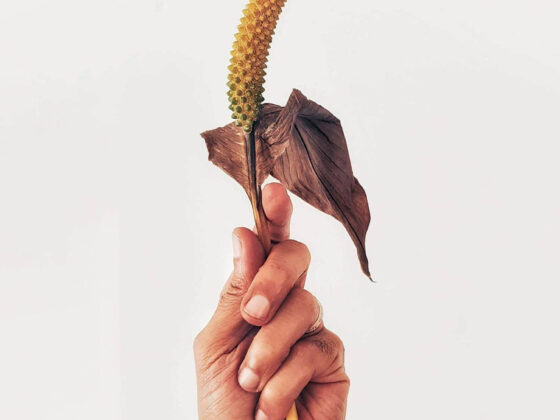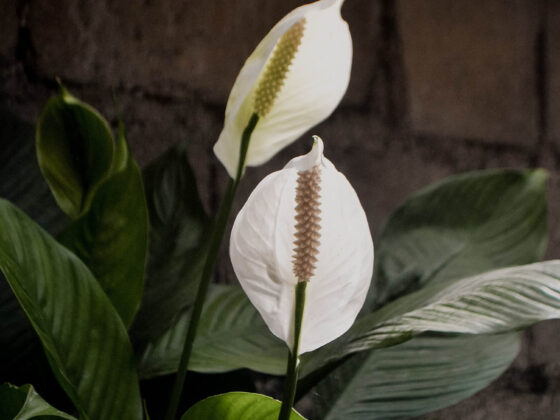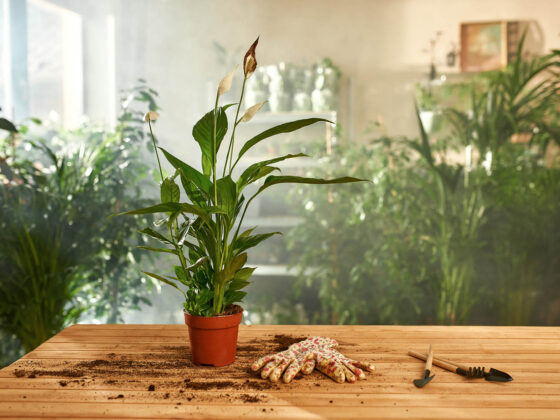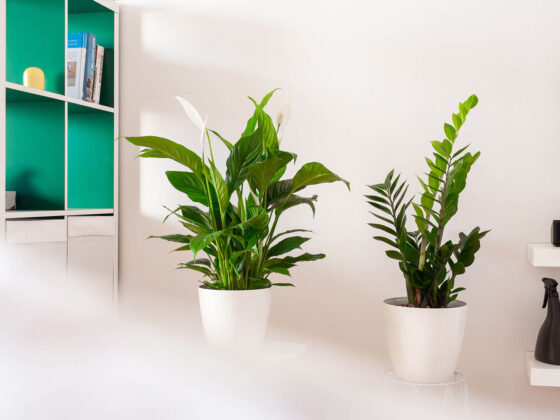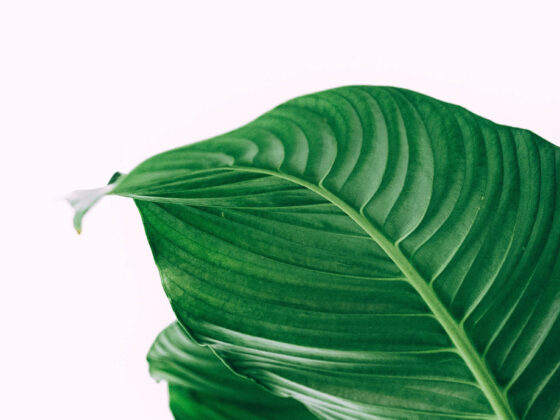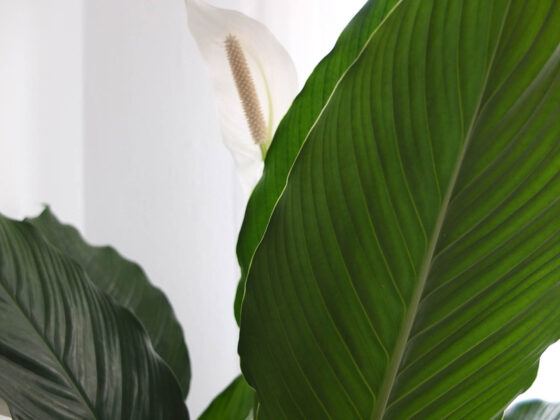You’re admiring the shiny green leaves of your Peace Lily, but suddenly you notice a problem. Some of them have a crumpled appearance, like sheets of cellophane that have gotten too close to a flame. You want to fix it, but first, you need to know what’s causing it. We’ll help you figure out why your Peace Lily’s leaves are curling and how you can help.
A Peace Lily’s leaves curl and crumple when they run low on moisture. This could be the result of exposure to direct sunlight, which these plants don’t tolerate well. It could also come from temperature stress or underwatering. Less common reasons include root rot, poor fertilization, or insect damage.
You can solve most of these problems by giving the Peace Lily whatever it’s lacking: shade, cool temperatures, water, fertilizer, and so on. Issues like root rot and pest infestations call for more drastic measures. We’ll give you some pointers on fixing each challenge when we go over it. Now let’s look at the 8 biggest reasons why a Peace Lily develops curling leaves.
#1: Genetics
Despite all the potential threats we touched on in the intro, rumpled leaves on a Peace Lily aren’t always a sign of trouble. Some varieties of Spathiphyllum have foliage that naturally looks a little bit crinkly.
The most well-known example is the Domino Peace Lily. This is a variegated cultivar, marked by dashes of white and minty green. Along with their odd coloration, the leaves have a creased and puckered appearance like a receipt that someone stuffed in their pocket.
The Dwarf Peace Lily is another variety that can seem strangely wrinkled. The effect isn’t quite as dramatic as it is on a Domino, but the leaves do have large creases at the veins that can make it look like it’s curling up.
If you haven’t owned your Peace Lily for long, double-check what type you have. The ridged look may be just your plant doing what comes naturally. As you get to know it better, you’ll be able to tell when something is out of whack.
#2: Harsh Sunlight
A Peace Lily is built for the dappled light that falls on the floor of tropical rainforests. It won’t hold up well when the sun’s rays shine on its leaves at full strength. If you leave your Peace Lily in direct sunlight for more than an hour or two a day, it’s not going to be happy.
The added heat from the sun makes water vapor escape from the leaves too fast for your plant to replace it. As the cells lose moisture, they can’t stay fleshy and full, so the leaves get saggy. This is one of the most common reasons why a Peace Lily’s leaves curl. You might notice the tips curving upward. The leaves are trying to reduce their surface area to cut down on water loss.
Count yourself lucky if you spot this problem when a few curling leaves are the only things wrong. If it sits in direct light for long enough, your Spathiphyllum could develop brown and blackened dead spots. In some cases, the leaves could die off completely.
The solution is to move your plant out of all direct sunlight for a few weeks. Don’t keep it in the dark, just make sure that it’s only getting ambient, indirect light. For help finding the right spot, see our article on proper lighting for Peace Lilies.
#3: Excessive Heat
Your Peace Lily doesn’t need to be sitting on a sunny windowsill to suffer from rapid water loss. High temperatures can have the same effect even in the shade.
The sweet spot for a Spathiphyllum is between 60 and 85 degrees Fahrenheit. If you can’t figure out why your Peace Lily’s leaves are curling, check whether the temperature is too high.
Consistency matters too. Sharp fluctuations in the temperature – more than 10 degrees or so within a single day – can stress the plant out. Keep an eye out for things that can cause big temperature swings, like heating vents, AC units, or radiators.
As with sun exposure, the cure is to move your Peace Lily to a place that suits it better.
#4: Dry Air
Humidity is another factor that affects how quickly water escapes your Peace Lily’s leaves. If it’s the dead of winter and your central air has left the house bone-dry, that could be why your Peace Lily’s leaves are curling.
When possible, keep the ambient moisture above 50%. If you want your Peace Lily to be extra-happy, bump it to 60% or higher. A low-cost hygrometer makes it easy to test how humid the air is.
Here are a few ways to step up the humidity around your Peace Lily:
- Cluster it with other plants that love moist air. They’ll all exhale water, creating a small zone of higher humidity.
- Set the pot on top of a pebble tray. For details on how to create one, see this article (it’s about Calatheas, but the pebble tray technique is the same).
- Place it in a room that gets a lot of steam, like a kitchen or a bathroom. Make sure it will still have enough light.
- Get a humidifier. This is the most reliable and effective way to control the humidity around your Peace Lily.
#5: Lack of Water
Sometimes the shortfall of moisture that crumples a Peace Lily’s leaves comes from the roots, not the leaves. Your plant’s foliage will shrivel if you’re not watering it enough. You’ll probably also notice the stems wilting and sagging. Prolonged thirst might also make the leaves dry out and get crispy at the edges.
Peace Lilies do best when their roots remain just a little bit damp. You should check the soil every few days to ensure that it doesn’t get too dry. Use a moisture meter to probe near the lower roots. If you don’t have this tool, poke your finger into the top inch of the potting mix. As soon as it feels dry, you can water again.
You should perform this test when you notice your plant’s leaves looking shriveled. If the soil seems dry, water it well. Drench it until there’s a good trickle of water coming out of the pot’s drainage hole. If your Peace Lily was just thirsty, the leaves should smooth out within a few hours.
#6: Overwatering and Root Rot
Let’s say you’ve checked for all the problems above, and none of them fit. The plant is in a shady spot, in a comfortable climate, with soil that’s nice and moist. So why are your Peace Lily’s leaves curling?
You may have let the soil get too wet. This can lead to many of the same danger signs as letting it get too dry.
The reason is that your Peace Lily’s roots need oxygen as well as water. When the soil is soaking wet for more than a day or two at a time, the roots can’t breathe. The sludgy conditions also allow microbes in the soil to reproduce rapidly, which can cause an infection. This condition is called root rot.
Because the roots are impaired, they can’t send water up to the rest of the plant. This makes your Peace Lily wrinkle and sag. If your plant is slumping and you know it’s not low on moisture, it’s worth taking it out of the pot to see if any of the roots are dark and slimy.
We have a longer post on how to treat root rot in Peace Lilies, but here are the basic steps you should take:
- Rinse the soil off the roots.
- Prune off all roots that show signs of rot. Between cuts, sanitize your trimmers with rubbing alcohol or a 10% dilution of bleach.
- Remove any leaves or stems that feel squishy.
- Repot your Peace Lily in a clean, sanitized pot. Use a potting mix with good drainage.
#7: Damage From Bugs
Some nasty pests like to suck the juices out of a plant, making it wrinkle and wilt. When you’re having trouble figuring out why your Peace Lily has curling leaves, take a close look at the leaves and stems. You may see signs of an infestation, like:
- Dusty-looking speckles of white, yellow, red, or black
- Smooth brown bumps along the stems
- Blobs of white fuzz
- Patches of sticky goop
- Wispy webbing between the stems and leaves
- White specks on the underside of the foliage
Treating pests on a Peace Lily is a topic for a whole article. But the basic protocol is to rinse off the foliage, wipe it down with rubbing alcohol, and spritz the plant with neem oil or some similar pesticide. You’ll have to repeat these steps a few times to get rid of all the bugs. Make sure you let your Peace Lily rest for a few days between treatments.
#8: Nutrient Shortage
Spathiphyllum plants don’t require a huge amount of fertilizer. But like all indoor plants, they do need some. They don’t have access to the same nutrients they’d get in the wild. When your plant runs low on elements like boron, zinc, and calcium, the leaves can grow in odd shapes.
When you plant a Peace Lily in a potting mix that contains fertilizer, it’s usually good for a year or so. After that, you need to refresh its nutrient supply. During the growing season, add some liquid fertilizer to its water every 2-4 weeks.
Since these plants aren’t heavy feeders, we advise giving no more than a ½-strength dose. You may even want to start at ¼-strength. If that’s enough to get your Peace Lily back to producing healthy growth, there’s no reason to overdo it. Too much fertilizer can cause more harm than too little.
Final Thoughts
A few wrinkly leaves on your Peace Lily shouldn’t alarm you too much. In most cases, this is due to a mild moisture shortage that you can correct by moving your plant to more comfortable conditions. Now that have a better idea of why a Peace Lily’s leaves curl, you’ll be well-equipped to get yours back into tip-top shape.






